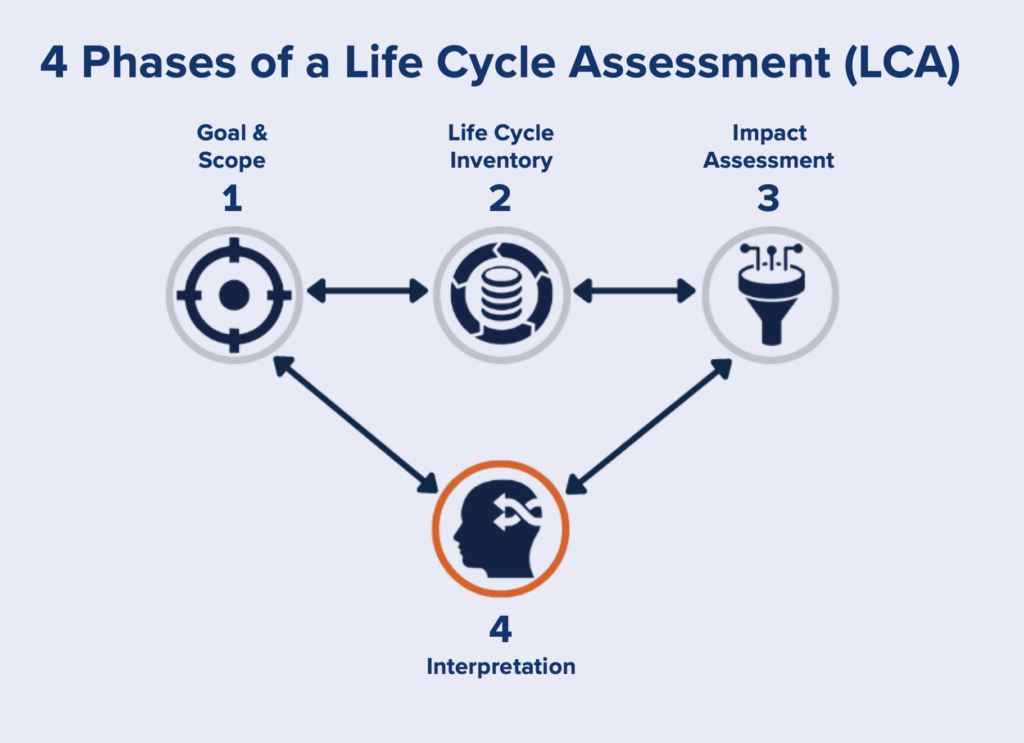
Sustainability is becoming a major factor for businesses, driven by at least three different aspects:
- Customers demand relevant information from producers and the market.
- Responsible entrepreneurs strive to reduce the negative impact of their actions.
- Various political directives oblige companies to report on several non-financial aspects of their business and products and for green claims to be substantiated.
Assessing and comparing the environmental performance of products is becoming a critical element in transforming the current economic system towards sustainability and circularity and in mitigating climate change.
How to make the environmental sustainability performance of products and processes comparable?
With regard to sustainability efforts and green claims, sustainability assessment tools play a crucial role in evaluating the environmental, social, and economic impacts of products, processes and services.
Currently, Life Cycle Assessment (LCA) is the most recognised methodology to assess potential environmental impacts of products or processes. The assessment covers a broad spectrum from raw material extraction, manufacturing and use, to end-of-life disposal, recycling or reuse. The results of an LCA serve the purpose to optimise and adapt processes in order to reduce environmental impacts.
An LCA is generally used to answer one of the following three questions:
- Where in the process or product are the main sustainability impacts?
- How do the sustainability impacts of different alternatives compare to each other?
- Do the identified sustainability impacts of a specific product system comply with external standards?
Successfully integrating Life Cycle Assessment into business processes
To ensure that environmental impacts are actually reduced and not just shifted, it is important to carry out LCAs at an early stage of the design process, rather than at the end, so that improvements can be adapted accordingly.
The methodology of LCA involves four main stages:
- Goal and scope definition: What will be assessed, and why?
- Inventory analysis: How extensive will the assessment be and what data is available, what data is needed and how can it be collected?
- Impact assessment: What is the qualitative and quantitative impact of the product or process?
- Interpretation of results: What are the biggest impact categories and what conclusions can be drawn?
The assessment design follows different key tasks and faces different challenges:
Environmental impact: LCAs evaluate various environmental indicators such as climate change, acidification, use of fossil resources, particulate matter, land use, water use and ecotoxicity.
System boundaries: LCA considers all stages of the product life cycle, including upstream and downstream processes, to avoid shifting burdens from one stage to another.
Data quality: LCA relies on accurate and reliable data to ensure the credibility of the results.
Drawing meaningful conclusions and insights from the gathered information to allow informed decision-making processes.
Interpretation of results: Drawing meaningful conclusions and insights from the gathered information to allow informed decision-making processes.
PLUS – peer review: A rigorous evaluation by independent experts in the field can ensure the quality, credibility, and reliability of the methodology and results of an LCA.
nova Session: Challenges and Developments in Life Cycle Assessment (LCA) (online)
It becomes apparent that LCAs are of complex nature and face various challenges surrounding their application. As LCA becomes an essential tool for evaluating the environmental impacts of products and processes, procurement and sustainability professionals must understand how varying standards and data quality influence outcomes.
The upcoming nova session (6 November 2024 from 14:00-16:00h CEST) will explore specifically the use of supplier-specific data in LCAs, but also Scope 3 emissions. We will present real-world examples demonstrating how standards affect results, alongside best practices for ensuring high-quality and reliable LCA data. Special attention will be given to the role of renewable feedstocks, Carbon Capture and Utilization (CCU), mass balance approaches, and electricity sourcing, all of which significantly shape LCA results.
Participants will gain practical knowledge on navigating the complexities of LCA standards, ensuring data consistency, and leveraging supplier data to make informed decisions. This session is tailored for professionals looking to enhance their sustainability strategies and reduce their carbon footprints through informed LCA practices.
Topics:
- Introduction to LCA: Importance for procurement and sustainability
- Supplier-specific data
- Impact of different LCA standards on results
- Data quality
- Key factors influencing LCA: Renewable feedstocks, CCU, mass balance, and electricity sourcing
- Practical case study from industry
Source
nova-Institute, original text, 2024-10-30.
Supplier
Share
Renewable Carbon News – Daily Newsletter
Subscribe to our daily email newsletter – the world's leading newsletter on renewable materials and chemicals














